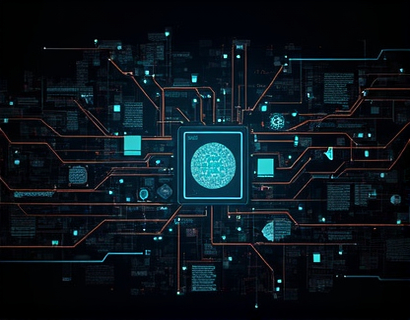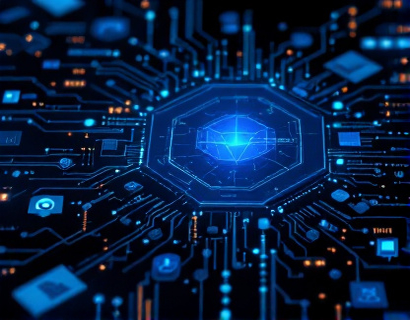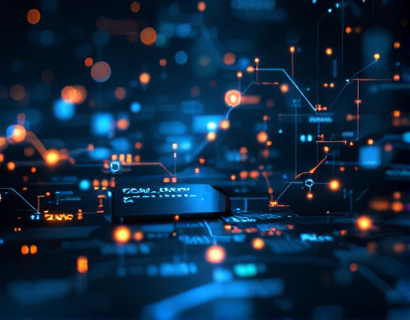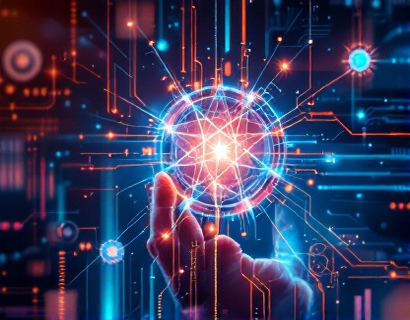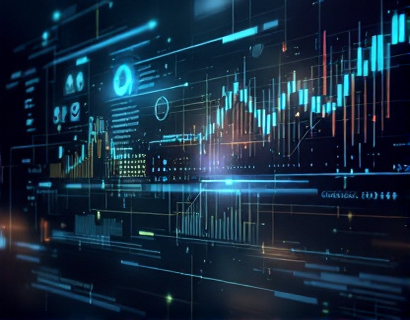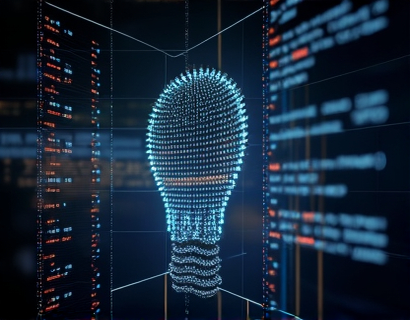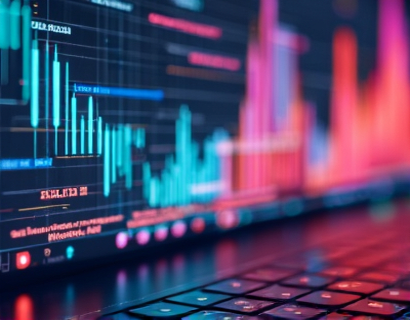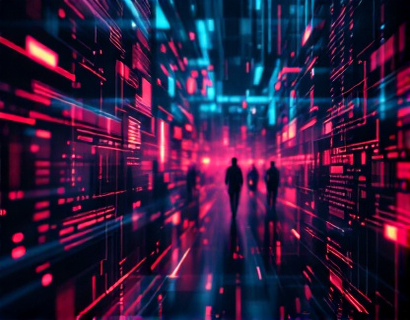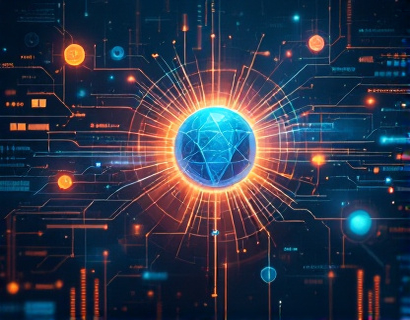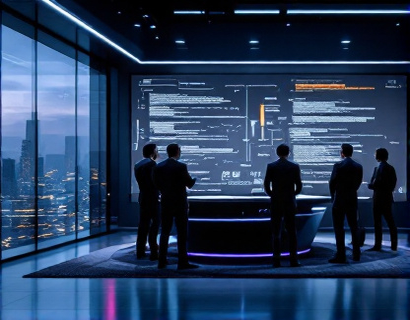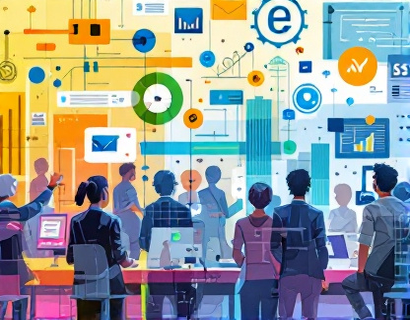Elevating Digital Productivity: The Synergy of AI and Cryptocurrency
The digital age has ushered in a revolution in how we approach work and daily tasks. At the forefront of this transformation are two pivotal technologies: Artificial Intelligence (AI) and Cryptocurrency. This article explores the profound impact of their convergence, highlighting how these advanced tech innovations are redefining productivity and efficiency. By examining the synergy between AI and cryptocurrency, we can gain insights into the next era of seamless and intelligent digital solutions.
Understanding AI and Cryptocurrency
Artificial Intelligence, a branch of computer science, focuses on creating systems capable of performing tasks that traditionally required human intelligence. These tasks include learning, reasoning, problem-solving, and perception. AI technologies such as machine learning, natural language processing, and computer vision are rapidly advancing, finding applications across various industries.
Cryptocurrency, on the other hand, is a digital or virtual currency that uses cryptography for security. It operates on a decentralized network, typically a blockchain, which ensures transparency and immutability. Bitcoin, the first and most well-known cryptocurrency, paved the way for thousands of alternative coins and tokens, each with unique features and use cases.
The Intersection of AI and Cryptocurrency
The fusion of AI and cryptocurrency is creating a new paradigm in digital productivity. This synergy leverages the strengths of both technologies to develop innovative solutions that enhance efficiency, security, and user experience. Let's delve into several key areas where this intersection is making a significant impact.
Smart Contracts and Automated Processes
Smart contracts are self-executing contracts with the terms of the agreement directly written into code. When combined with AI, smart contracts can automate complex processes with higher precision and reliability. For instance, in supply chain management, AI can predict demand and optimize inventory levels, while smart contracts ensure that all transactions are executed automatically and transparently. This reduces manual intervention, minimizes errors, and accelerates workflow.
Moreover, AI can enhance the functionality of smart contracts by adding layers of intelligence. For example, AI-driven algorithms can analyze market conditions and adjust contract parameters in real-time, ensuring optimal outcomes. This dynamic adaptability is crucial in fast-paced environments where conditions change rapidly.
Enhanced Security and Fraud Detection
Security is a paramount concern in both AI and cryptocurrency domains. The integration of AI in cryptocurrency systems significantly boosts security measures. Machine learning models can detect anomalies and patterns indicative of fraudulent activities, providing real-time alerts and preventing potential breaches. This proactive approach to security is essential in a landscape where cyber threats are increasingly sophisticated.
AI can also improve the security of blockchain networks themselves. By analyzing network traffic and transaction data, AI algorithms can identify and mitigate vulnerabilities, ensuring the integrity of the blockchain. This not only protects user assets but also enhances trust in cryptocurrency platforms.
Personalized User Experiences
AI's ability to process and analyze vast amounts of data makes it an ideal tool for creating personalized user experiences. In the context of cryptocurrency, AI can tailor recommendations based on user behavior, preferences, and market trends. For instance, AI-driven financial advisors can provide customized investment strategies, helping users make informed decisions.
Furthermore, AI can enhance the user interface and experience of cryptocurrency applications. Natural language processing enables voice and text-based interactions, making platforms more accessible and user-friendly. Chatbots powered by AI can offer 24/7 customer support, addressing user queries and issues promptly.
Decentralized Finance (DeFi) and AI
Decentralized Finance (DeFi) is a revolutionary financial ecosystem built on blockchain technology, offering a range of financial services without traditional intermediaries. AI plays a crucial role in enhancing DeFi platforms by optimizing trading strategies, risk management, and portfolio management. AI algorithms can analyze market data, predict price movements, and execute trades with high precision, outperforming traditional methods.
Additionally, AI can improve the user experience in DeFi by simplifying complex processes. For example, AI-driven interfaces can guide users through the steps of lending, borrowing, and yield farming, making these services more accessible to a broader audience. This democratization of financial services is a significant step towards financial inclusion.
Data Analytics and Insights
Data analytics is a cornerstone of both AI and cryptocurrency. The combination of these technologies enables deeper insights and more accurate predictions. AI can process and analyze large datasets from blockchain transactions, providing valuable insights into market trends, user behavior, and economic indicators. This data-driven approach allows businesses and individuals to make informed decisions, optimize operations, and identify new opportunities.
Moreover, AI can enhance the efficiency of data management in cryptocurrency systems. By automating data cleaning, transformation, and analysis, AI reduces the time and effort required to derive actionable insights. This not only improves productivity but also ensures that decisions are based on the most up-to-date and accurate information.
Challenges and Considerations
While the integration of AI and cryptocurrency offers numerous benefits, it also presents challenges that need to be addressed. One of the primary concerns is the regulatory landscape. The decentralized nature of cryptocurrency and the complex algorithms of AI make it difficult for regulators to enforce laws and standards. Ensuring compliance while fostering innovation requires a balanced and forward-thinking approach.
Another challenge is the technical complexity involved in integrating these technologies. Developers need to possess a deep understanding of both AI and blockchain to create robust and secure systems. This requires significant investment in research and development, as well as a skilled workforce capable of driving these innovations forward.
Privacy is also a critical issue. While AI can enhance security, it also raises concerns about data privacy and surveillance. Ensuring that user data is handled ethically and transparently is essential to maintaining trust in these systems. Implementing strong privacy protocols and adhering to best practices in data management are crucial steps in this regard.
Future Prospects
The future of AI and cryptocurrency is promising, with numerous potential developments on the horizon. One exciting area is the integration of AI with other emerging technologies such as the Internet of Things (IoT) and 5G networks. This convergence can lead to smarter, more interconnected systems that further enhance productivity and efficiency.
Another area of growth is the development of AI-powered cryptocurrency wallets and trading platforms. These tools can offer advanced features such as automated portfolio rebalancing, real-time market analysis, and enhanced security measures. As the technology matures, we can expect more user-friendly and sophisticated applications that cater to both novice and experienced users.
Furthermore, the rise of AI-driven decentralized autonomous organizations (DAOs) is an intriguing development. DAOs combine the decentralized aspects of blockchain with AI's decision-making capabilities, creating self-governing entities that can operate with minimal human intervention. These organizations have the potential to revolutionize various sectors, from finance to governance.
Conclusion
The synergy between AI and cryptocurrency is transforming the digital landscape, offering unprecedented opportunities for enhancing productivity and efficiency. By leveraging the strengths of both technologies, we can create smarter, more secure, and more user-friendly systems. As these innovations continue to evolve, they will play a pivotal role in shaping the future of work and daily tasks. Embracing this fusion is essential for tech innovators and early adopters who wish to stay ahead in the rapidly changing digital world.











